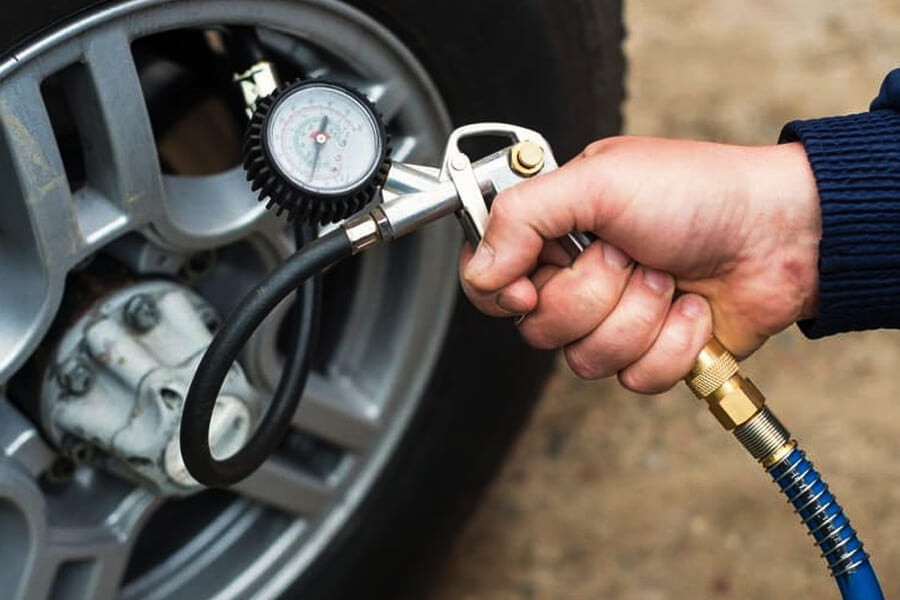Are you looking for Tyre Pressure Check for your vehicle?

Many drivers don't check their vehicle's tyre pressure. Often only when the TPMS light starts showing on the dashboard.
The correct air pressure in the tyres is crucial!
Only with the correct pressure, the tyres maintain their optimal driving characteristics. The length of braking distances, stability in bends, the risk of aquaplaning, the wear and durability of the tyres, and fuel consumption depend on it.
But which tyre pressure is right?
Here is the most important information!
The optimum air pressure for winter, summer or all-season tyres depends primarily on the car. The specifications are given by the manufacturer. The correct information can be found directly in or on the vehicle.
- on a sticker on the inside of the B-pillar
- on a sticker on the inside of the fuel filler cap
- on a sticker in the glove compartment
- in the owner's manual
Important
Tyre pressure can vary depending on the load and must be increased when fully loaded. If you want to save fuel, you can increase the tyre pressure specified by the manufacturer slightly (!) by 0.2 to 0.3 bar.
How often should you check the tyre pressure?
Basically, the recommendation is to check the tyre pressure regularly at intervals of 14 days or at least once a month.
We at PBT Supplies offer free tyre pressure checks to everybody!
Whether you are one of our regular customers or are just passing by, you are always welcome.
You don't need an appointment for a Tyre pressure check Market Harborough. Just come to us at any time during our opening hours.
We want you to be safe!
The correct tyre pressure is essential for safe driving: Too low tyre pressure leads to unstable driving behaviour and, in the worst case, causes a dangerous tyre blowout.
Besides, the correct air pressure can save you money because fuel consumption and tyre wear decrease significantly with the right air pressure.
Even if you have a tyre pressure monitoring system onboard that warns you as soon as a tyre is underinflated, you should check the air pressure regularly. The same applies to tyres filled with helium. Although the mixture, which consists mainly of nitrogen, is better retained by the tyre, regular air pressure checks are still necessary. Even slight changes of only half a bar less are enough to change the driving characteristics and increase fuel consumption by 0.3 litres per about 62 miles.
What happens when driving with incorrect tyre pressure?
If there is too little air in the tyres, the car's handling becomes spongy. This can manifest itself in a bumpy drive when changing lanes or unclean straight-line driving of the vehicle. In this case, at the latest, you should check the tyre pressure as soon as possible. But even without these signs, too low tyre pressure has an unfavourable effect: The braking distances increase, the handling in curves deteriorates and the fuel consumption increases.
Slightly increased air pressure is often less of a concern. Many drivers increase the air pressure recommended by the manufacturer simply to save fuel. A deviation of 0.2 to 0.3 bar is harmless and does not affect safety. But a significantly too high air pressure is risky. The reason: the contact area of the tyre is reduced, the grip decreases (tyres spin quickly, especially in the wet). If the tyre pressure is permanently too high, the tread will wear unevenly, and the tyre will wear out prematurely.
We hope you have found this information page useful. If you have any questions, please don't hesitate to get in touch with us.
